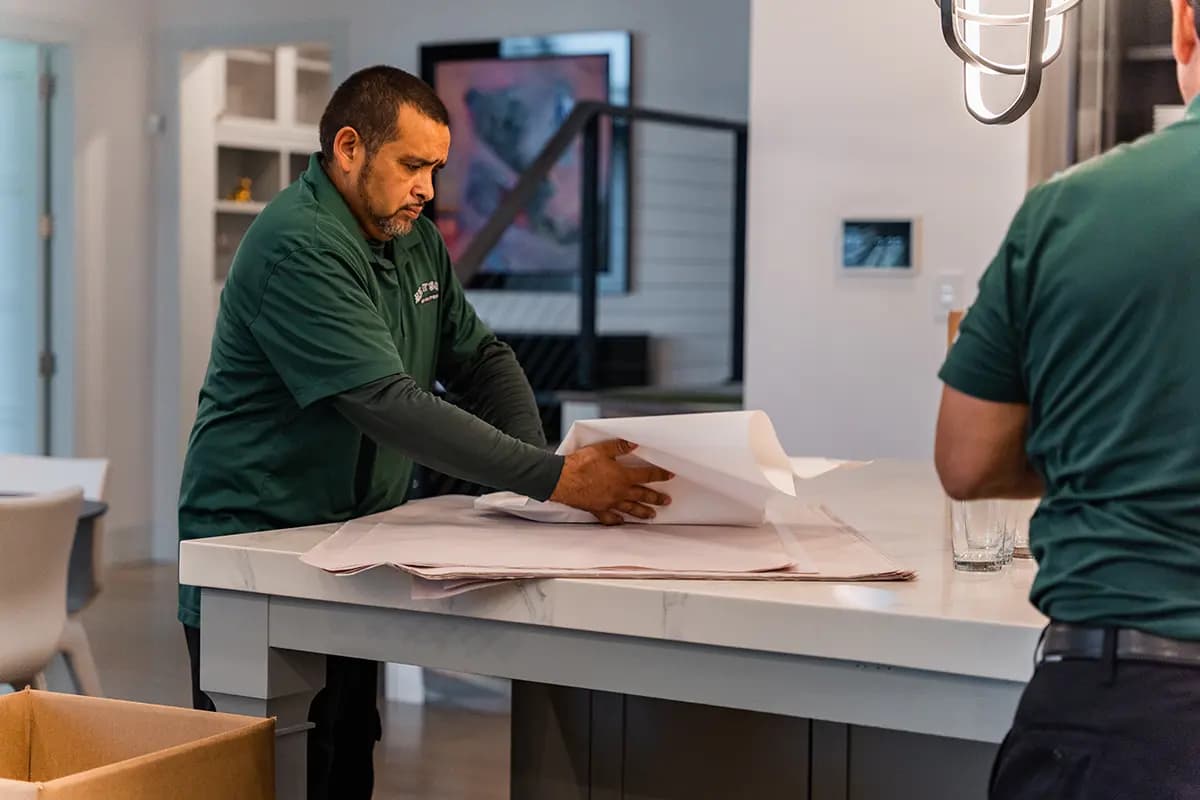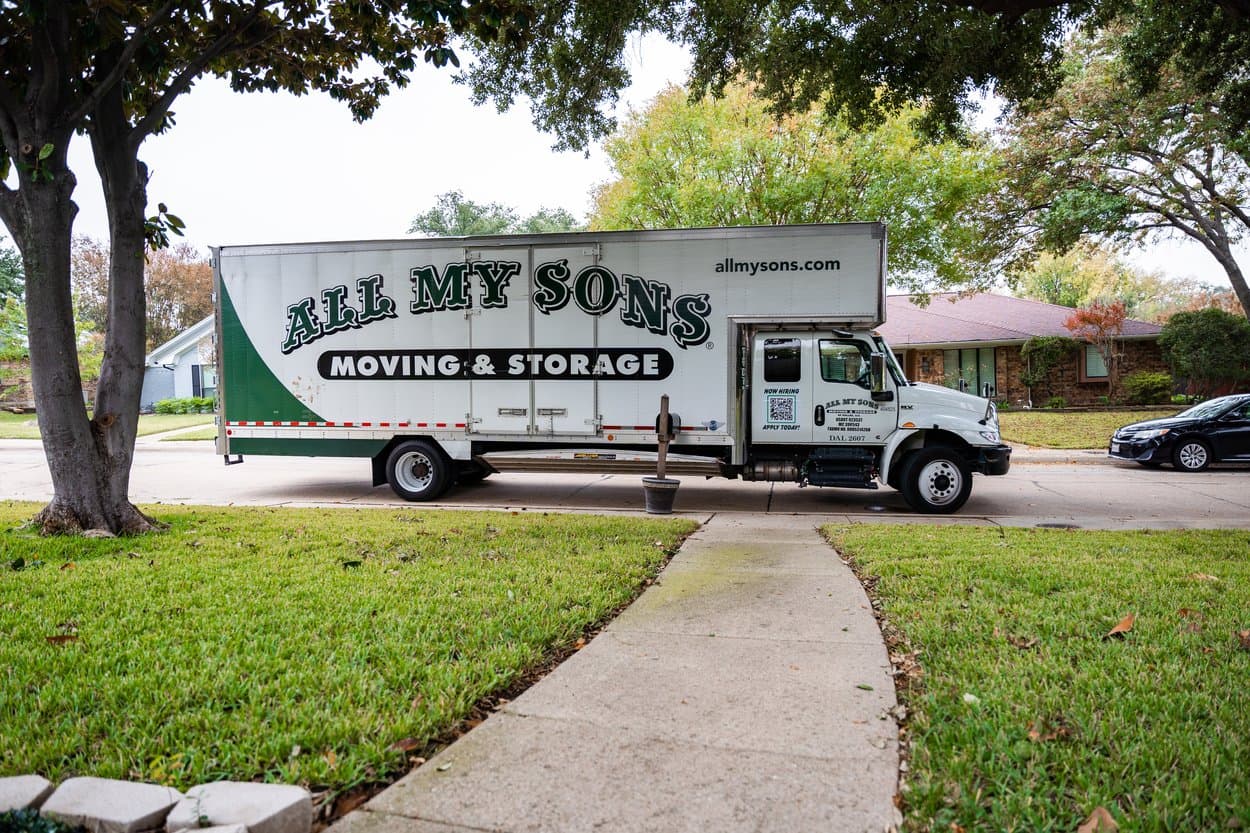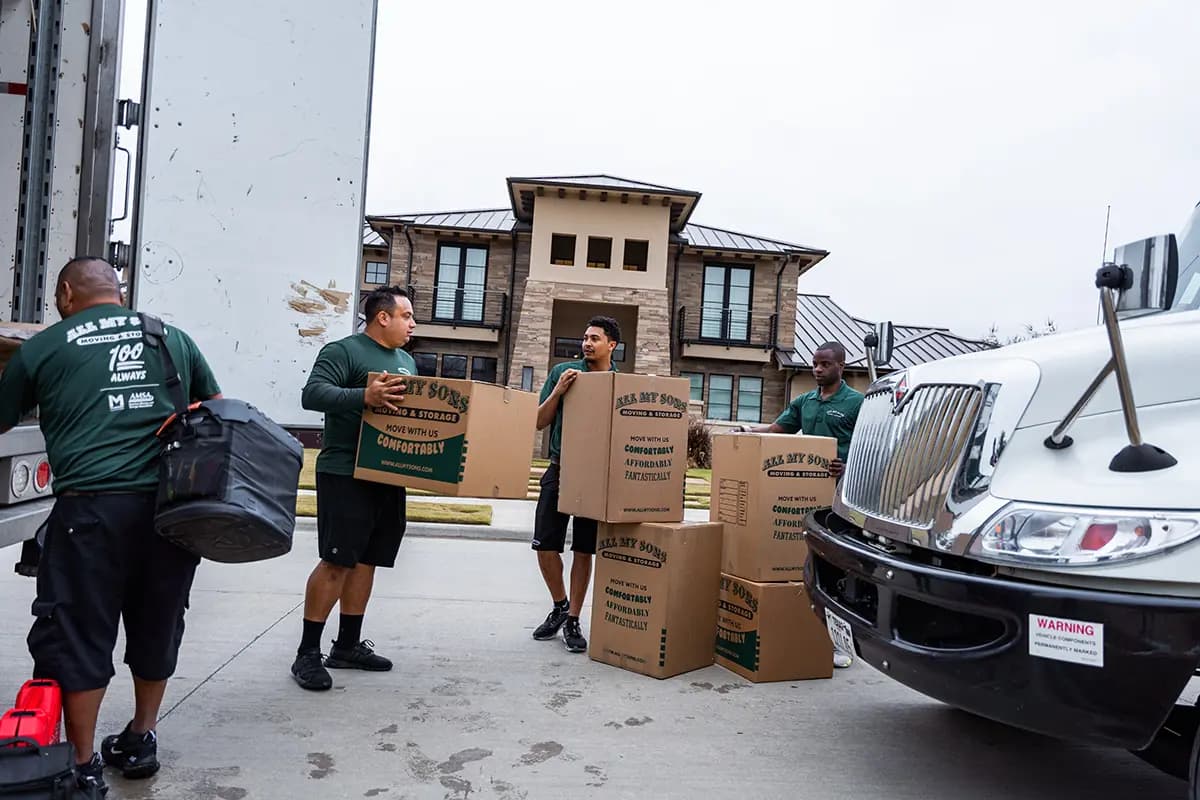Are You Packing Your Stuff into Storage?
All My Sons Moving & Storage offers advice on how to prepare your belongings for storage.
When you put your belongings into storage, you want to be sure everything is packed well so that your items can come out of the storage unit in the same condition. Even in a temperature-controlled unit, improperly packed items can sustain damage when they are stored long-term. You might have an exact move-out date marked in your calendar, but any number of unforeseen circumstances could mess with your plan and leave you staying in your unit longer. That’s why it’s important to pack your storage unit like your items are staying for the long haul.
If you’ve already asked yourself the important questions you should consider before renting storage, then you will have an idea of what kind of unit will meet your needs. After you have reviewed your inventory and determined you do not have any items you should not store, then it’s time to get packing.
All My Sons Moving & Storage has been in the business of helping companies and families make a smooth relocation for almost 30 years. We know how to store items for the long-haul so that they can emerge from their hibernation in pristine shape. We want to empower our customers with the organizational skills they need to preserve their precious belongings, so we have compiled this guide to help you get your items ready for storage.
Why is it Important to Pack Items in Storage Properly?
When an item is out of sight, it’s easy to forget about it and assume that it’s safe wherever it is. Of course, storage facilities are designed to be secure places for you to put your items. They typically have controlled access, state-of-the-art surveillance systems, and temperature-controlled or climate-controlled units to protect your items from the elements. Unfortunately, the combination of improper packing and extended periods of time out of sight can lead to damaged items.
Here are some of the things that can damage your items over time:
Temperature
If your unit is not temperature-controlled, then shifts in the outside temperature will affect your items. During the summer your unit could get extremely hot and during the winter your unit could get extremely cold. Watch out storing items that melt in heat like candles or items that freeze in cold like certain liquids. When these items melt or freeze, they could break containers and leak out to damage other items.
Moisture
Just a little bit of moisture can lead to the growth of mold and mildew. These sour-smelling fungi thrive in damp, dark places and can permanently ruin your belongings. The risk of moisture-related damage exponentially increases when items are packed while wet.
Light
Some storage units, drive-up units in particular, might have spaces where sunlight leaks into the unit. Over time, UV rays can have a bleach-like effect on items made of paper, leather, cardboard, and fabric.
Pests
Your storage facility undoubtedly takes measures to prevent pests of all types, but they have no control over what you or others might bring into the facility. Rodents and insects have been known to find their way into units and damage the contents inside.
Gravity
Heavy items stacked on top of lighter, more fragile items, might settle over time and lead to damage to one or both items. Improperly orienting items, like putting a fridge into storage upside-down, could put pressure on components not intended to withstand long-term pressure.
How Do You Keep Items Safe While in Storage?
Your storage facility does their part to prevent theft, pests, mold/mildew damage, and unforeseeable disasters by prohibiting certain items, keeping up with security, and offering well-maintained climate-controlled and temperature-controlled units. You can do your part to ensure your items stay in great condition while in storage by packing your items with long-term storage in mind.
Here are some general guidelines you should follow to prepare all your belongings for storage:
1. Never Store Anything Restricted
The rules about what you can and can’t put in a storage unit are there for good reasons. Items that are hazardous, combustible, illegal, or attract pests can endanger your other belongings as well as the entire storage facility. If you find a restricted item you want to store in your household inventory then dispose of it properly or find an alternative storage solution.
2. Make Sure Your Items are Clean and Dry
The quickest path to mold and mildew is through excessive moisture and dirty items can potentially attract pests. Before you put your items into storage make sure they are dusted, free of food particles, scrubbed or washed, and dried properly.
3. Pack Your Items in Appropriate Containers
When you’re storing items long-term you want to pack them into containers that will keep them safe for the duration of their stay. Standard cardboard moving boxes might work out for some items, but others you might want to pack with extra protection.
4. Choose the Right Unit for Your Needs
If you are storing temperature-sensitive items, then it would be best to get a unit that is temperature-controlled. You should also store your items in a unit that is large enough to comfortably accommodate them.
5. Check On Your Items Periodically
Even with all the precautions in the world, things can still happen. If possible, check on your items while they are in storage to inspect them for signs of pests, mold, mildew, sun-bleaching, rust, or any damage gravity can do over time.
How To Pack Your Items:
Now that you are renting a storage unit, it’s time to prepare your items for storage. Remember, even if you only plan on staying in storage for a short amount of time, you should always pack your items with care in case your stay gets extended. When you go to retrieve your belongings, you will be glad you took the extra steps to make sure they stayed in great condition.
How to Pack Appliances in Storage
Before you store your fridge or freezer you should empty them of their contents, defrost them, and clean the internal shelves. Once the appliance is clean, dry off all the components. Store your fridge or freezer upright with the door slightly ajar to keep mold or mildew from taking up residence in the interior.
Your washer and dryer should also be clean and dry before you move them into storage. Make sure you clean out the dryer’s lint trap before you put the item into storage. Store these large appliances upright with the doors slightly ajar to avoid moisture buildup.
Smaller appliances like coffee makers, microwaves, and air fryers should be thoroughly cleaned and free of food particles before you store them. If you have the appliance’s original box and packaging, then pack the item back into its box for storage. If you do not have the item’s original box, use an appropriately sized box and fill the empty space around the item with packing paper or soft items like towels.
How to Pack Furniture in Storage
Measure your furniture before you select a storage unit so that you attain the correct size unit to suit your needs. Dissemble any large furniture pieces and save the hardware you remove in a labeled plastic bag. You can either tape this plastic bag to the furniture pieces or save it in one of your moving boxes, as long as you notate or remember where you have put them. If you have a couch to store, remove the cushions and vacuum the inside to get rid of any food or dirt particles.
Plastic wrap might help protect your furniture while you are moving it, but if you are storing your furniture long-term then plastic wrap might promote the buildup of moisture. Instead, cover your furniture in breathable fabric like furniture blankets to protect it from dust and dirt while it is in storage.
How to Pack Electronics in Storage
If your electronics have batteries, remove the batteries first. Remove and wrap external cords, label them, and put them in a box or plastic bin to keep with your electronics. Clear your electronics of any dust or dirt and then place them back in their original packaging if you still have it. If you do not have the original packaging, find an appropriately sized box and fill any extra space inside with packing peanuts, packing paper, or bubble wrap. You can add silica gel packets to the packaging for additional protection against moisture.
Keep your electronics upright while in storage. Extreme temperatures can damage your electronics, so you should store them in a temperature-controlled storage unit.
How to Pack Clothes in Storage
Before you pack your clothes, wash and dry them completely so any lingering dirt, odor, or moisture does not fester while your clothes are packed in storage.
Your hanging clothes like nice dresses, dress pants, suits, and blouses are best stored in wardrobe boxes. If you have more delicate and expensive dresses or suits, we recommend you zip them up in a garment bag as well.
Vacuum-sealed bags might save you space and help protect your clothing from external elements but be aware that storing clothing this way can cause permanent wrinkles. Do not vacuum-seal items made of delicate silk, cashmere, or wool.
Put some cedar chips in your clothing boxes to prevent pests like moths and silverfish from getting into and damaging your clothing.
How to Pack Books in Storage
Inspect your books for signs of mildew or pests before you put them into storage. Dust your books and wrap them in acid-free packing paper. Pack books into small boxes and be careful not to overload them. Books can make boxes too heavy to transport very quickly.
Line the bottoms of your boxes with packing paper or bubble wrap. Carefully stack similar-sized books together and then fill any leftover space in the boxes with bubble wrap or packing paper.
Books do best in temperature-controlled environments, so if you are storing books for a long period of time then choose an appropriate unit to ensure they stay in great condition while they are in storage.
How to Pack Toys in Storage
Clean your toys and remove batteries from electronic toys before you put them into storage. Wrap fragile toys in packing paper or bubble wrap and put them in plastic bins or boxes. Put accessories for dolls or action figures into plastic bags. Be careful of any components that might be breakable. Extremely fragile toys should be packed with extra packing material and placed in durable bins or boxes.
If you have large toys that disassemble like dollhouses, castles, or play kitchen sets, then take those toys apart and save any hardware pieces in labeled plastic bags. If your large toy pieces cannot fit in boxes by themselves, wrap them in furniture blankets with the rest of your furniture pieces.
Packed Up and Ready
Your items are now prepared for storage, and you can rest easy knowing that your belongings will stay in great condition until you go to retrieve them. When you take extra precautions to fight the effects of temperature, moisture, light, pests, and gravity then you minimize the possibility of damage to your precious belongings. Once you are ready to unpack your storage unit, either for good or for the season, your items will emerge in great condition, ready to serve their function.
When you’re ready to make your move, call the expert movers at All My Sons Moving & Storage to help with all your moving needs. We offer local moving services for our customers going down the block and long-distance moving services for our customers going to new cities. Whatever your moving needs and budget, All My Sons Moving & Storage has you covered. If you need storage space with your move, ask one of our moving specialists about our available storage facilities. Get started on your stress-free move by calling your local All My Sons Moving & Storage location or getting a quote online.
Quick Moving Tips

Common Moving Mistakes and How to Avoid Them
Here are several common mistakes that people make while moving, and what movers can do instead that will keep their moves on track.

How to Pack Patio Furniture for a Move
Follow this 5-step guide to packing up patio furniture for a move.

What to do with Packing Supplies When Your Move is Over
Five ways you can reclaim the floor space in your brand-new home and send those moving boxes packing.


